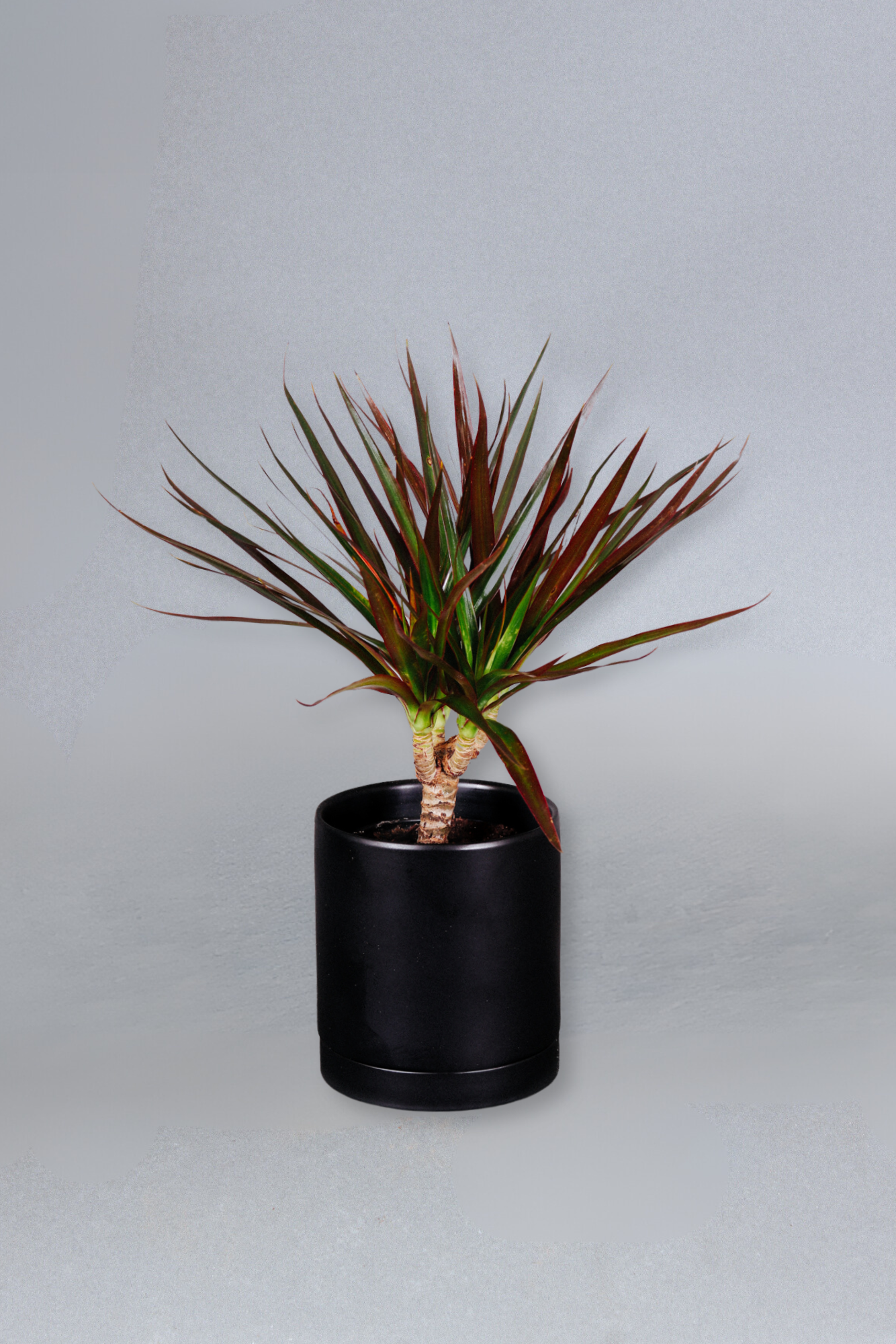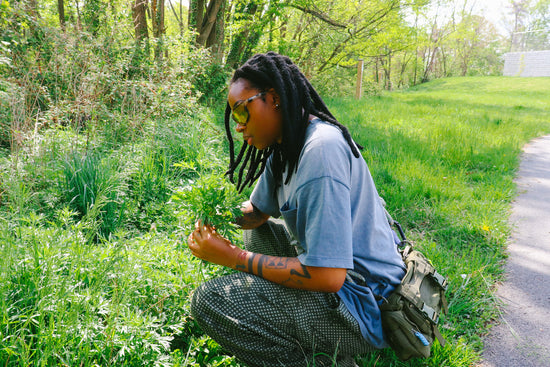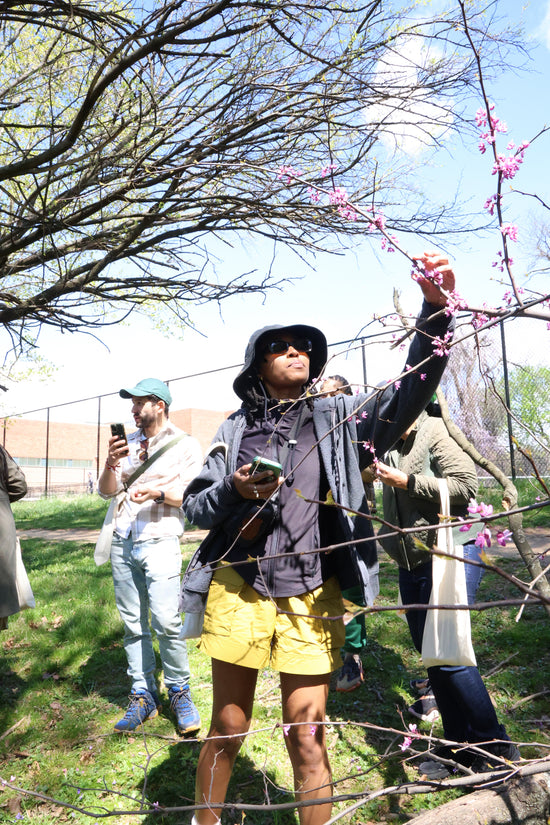Maintenance: Low | Climate: Warm + Humid | Light: Bright + Indirect | Watering: Semi-frequent | Pet Safe: Yes
CHARACTERISTICS
Money Trees are native to tropical regions of western Asia and southeast Europe. They typically have multiple trunks braided together when they’re very young and continue to grow this way as they mature. Each stems grows fanning leaves in clusters of five or more, creating a luscious canopy of leaves. They can grow up to 7 feet over their long life with you.
LIGHT
Money Trees prefer medium to bright, indirect light. Sunlight filtered through blinds or curtains, and placement a few feet away from a bright window is ideal. Well-lit conditions produce more robust growth, but they don't mind slightly dimmer corners of the room. Keep away from direct sunlight and rotate regularly for even growth.
WATER
Water your Money Tree generously once the top 50%-75% of soil has dried, allowing excess water to drain out. It can tolerate a brief period of drought in between waterings since it does not enjoy wet soil. Reduce the watering frequency during fall and winter as it rests and grows slower. To maintain the quality of your soil and leaf appearance, we do not recommend tap water. Check out our list of preferred water types!
AIR
The best way to keep your Money Tree healthy + happy is to mimic a tropical environment in your space. To reproduce this, maintain temperatures between 65º-85º. You can boost humidity around your plant by:
- Misting the leaves 3-5x per week with non-tap water
- Adding a humidifier nearby
- Making a pebble tray that lives underneath the pot
- Placement in a bathroom or kitchen, if lighting is suitable
PLACEMENT
Money Trees symbolize prosperity, luck, and positive energy. They’re often popular in businesses to attract the luck and abundance it is believed to bring.
According to ancient and respected Feng Shui practices, placing a Money Tree at the southeast corner of your home harnesses its positive, wealthy energy. No matter what it symbolizes for you, place your Money Tree where you can be sure all its needs will be met.
POTTING & SOIL
We recommend a ceramic planter with plenty of drainage to provide an ideal moisture balance for your Money Tree. When repotting, keep it in a planter of the same size or no more than 2 inches larger. It can be repotted every 1-2 years in the beginning, then only every few years once it’s mature. Read through Pruning and Propagating below to keep your plant at a manageable size.
A well-draining soil with amendments such as coco coir, perlite, and sand will provide a healthy balance of moisture retention, aeration, and drainage. This is important to ensure its roots have space to spread and are not suffocated by waterlogged soil.
SEASONAL CARE
Money Trees are pretty simple plants that don’t need a whole lot of extra care. Like all plants, though, there will be a handful of seasonal notes to remember:
- Maintain comfortable temperatures and moderate humidity levels through fall and winter
- Move your plant a few feet away from cold or drafty windows
- If possible, bring it to a brighter area to make up for shorter daylight during winter
- During cold months, water less frequently (only once the soil has dried 75%)
- Avoid repotting, fertilizing, and other drastic changes that stress the plant
PRUNING & PROPAGATION
Pruning is key for a healthy plant. Removing damaged and old leaves allows the plant to direct all energy to healthy growth. Pruning can keep it at a smaller size or help to grow new plants through propagation. Long, healthy stem cuttings can grow new roots in water - an easy way to grow baby Money Tree plants.
To propagate your Money Tree, you’ll need:
- Clean + sharp pruning shears or scissors
- Jar or glass of room temperature, non-tap water
- Healthy stems 6+ inches in length with multiple health leaf clusters
- Cinnamon (optional)
How to propagate with stem cuttings:
- Choose healthy stem(s) with multiple leaf clusters.
- Make your 45º cut just above the woody bark the stem is attached to. Do not cut into any bark.
- Allow your cutting to sit out for a few hours so the cut can callous before placing it in water.
- Place your cutting in a clean glass with non-tap, room-temperature water.
- Place it in a bright area out of direct sunlight.
- Refresh with clean water + pot into soil when roots are at least 3 inches long.
Optional: Sprinkle cinnamon on any exposed cuts to prevent infection.
Be aware that the longer your propagations sit in water, the harder it will be for them to transition to soil when they're potted. Never prune plants more than 10-20% at a time.
COMMON ISSUES
Once you’ve got the hang of what it needs, your Money Tree shouldn’t give you much trouble. Some things you can look out for are:
YELLOW LEAVES
Yellow Leaves on a Money Tree are most often from overwatering, low light, or temperature stress. If the soil is wet, reduce your watering frequency and ensure the soil and planter have good drainage. Yellow leaves are also a response to big changes, and natural aging. While all of these are simple fixes, be aware that more serious issues like nutrient deficiency, pests, and fungus also cause yellow leaves.
BROWN LEAVES, TIPS, OR EDGES
Brown, dry leaves on a Money Tree are a sign of underwatering, low humidity, leaf scorch from direct sunlight, or fertilizer burn. Start by assessing the soil moisture, lighting, and how much humidity you’ve provided. Leaf scorch from sunlight can also look like a “bleached” or white burn.
CURLING LEAVES
Money Tree leaves curl when improperly watered, living in dry air, or when dealing with a pest or fungus infestation. They may also curl when they’re exposed to undesirable environments.
DROOPING, LIMP LEAVES
Drooping leaves signal that your Money Tree has been under or overwatered. They may also droop in response to temperature fluctuations and after going through a big change.
SOFT, MUSHY TRUNK
A soft trunk and stems on a Money Tree is a sign of overwatering or root rot. It has absorbed too much water and suffocated the plant. You can cut away the entirety of the rotten stems and carefully tend to the remaining healthy plant. It’s also a good idea to remove the plant from the pot to look for dark, mushy, or smelly roots that should be removed.
PRO TIPS
- Money Trees are fairly easy-going. With the right environment and cautious watering, you’ll be able to witness its abundant growth in your home,
- Prune away old leaves to make room for new growth in spring and summer!
You're a pro now! If any of your questions haven't been answered, let us know!








